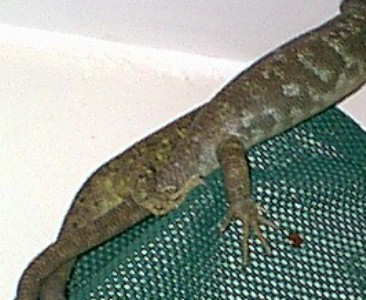| Sexing and Breeding |

| 
| 
|
It is possible to evert, or "pop", the hemipenes on some males. This should only be done by an experienced herpetoculturists as massive trauma to the sexual organs can result if done incorrectly. I was able to "pop" my larger more passive male with relative ease. (The photo of hemipenes at the top of the page was taken of a deceased animal). The small, territorial male was again a different story. I was unable to evert the hemipenes as he must have been holding them in tightly. I really didn't feel the need to force them out as I can assume from his aggressive personality and more importantly his over enthusiastic attempts to mate with my adult females that he is indeed a male. Don't be fooled by agressiveness towards others to label a certain skink as a male. Lucy, my largest female, is relentless in persuing and attacking any other female she is allowed contact with. I've had to forcefully separate her on more than one occasion from another female.
Probing is probably the most conclusive method of sexing. This is another practice that should be left only to the most experinced hobbyist. I've found that the females average probe depth is 6-8 scales while the males probed closer to 10 or 11. I haven't seen any reports of Prehensile Tail Skink probing so unfortunately I have nothing to compare this to.
As far as breeding is concerned, I am far from an expert. Gestation is said to last 6-7 months resulting in one, sometimes two, live offspring. This is a very low reproductive rate when considering the size of the range of wild populations of this species and the rate at which that habitat is being destroyed.
The expecting mothers shed 7-10 days before giving birth. Babies are born encased in a placental sac which they immediately tear out of and consume. Since a full grown skink is usually no more than 32 inches, it is suprising that newborn corucia born at a seemingly large length of 12" are not uncommon. I was amazed when my 21" female gave birth to an offspring of this length! If it hasn't started upon birth, a young skink will shed within a week. It is crucial that baby skinks be well hydrated during this delicate time in their lives. A shallow water dish should be available at all times and soaking them in a half inch of lukewarm water may be necessary at even the slightest sign of dehydration.
A unique behavior of zebrata is their general practice of "child care". Very few reptiles display any type of interest in their young after giving birth. Like all reptiles, monkey skinks are born fully developed and ready to fend for themselves. However, their nature is to stay close to their mothers. The mother provides no real direct care other than warding off predators that find her intimidating but would otherwise find her baby a tasty snack.